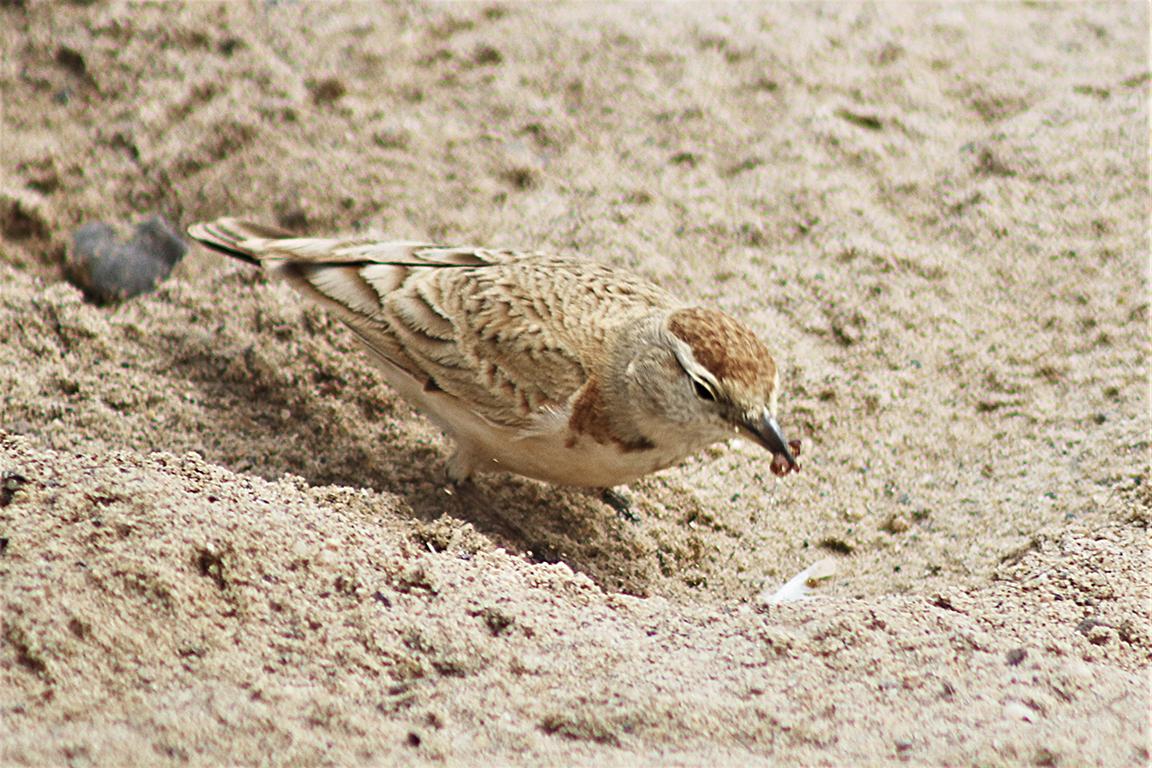Dune Lark

Cape Cross, Namibia
The dune lark is endemic to Namibia. Despite its restricted distribution, it is categorised as "Least Concern" by the IUCN.
Habitat
The dune lark inhabits subtropical and tropical lowland dunes sparsely vegetated with grasses and shrubs.
Feeding
Dune larks eat a mixture of insects and seeds. They forage in the sand, glean from grasses and leaves and catch flying insects aerially.
Breeding
The female dune lark constucts a nest consisting of a domed cup made of grass and lined with hair, feathers and fine plant material. The female usually digs a depression in the sand at the base of a tuft of grass or a shrub and facing south to escape the sun's heat. The female also incubates one or two eggs although the male shares chick rearing. Nesting all the year round, dune larks will often take advantage of rainfall to start breeding.
Wildfile Extra
Almost its entire dune lark population is within the boundaries of the Namib-Naukluft National Park.